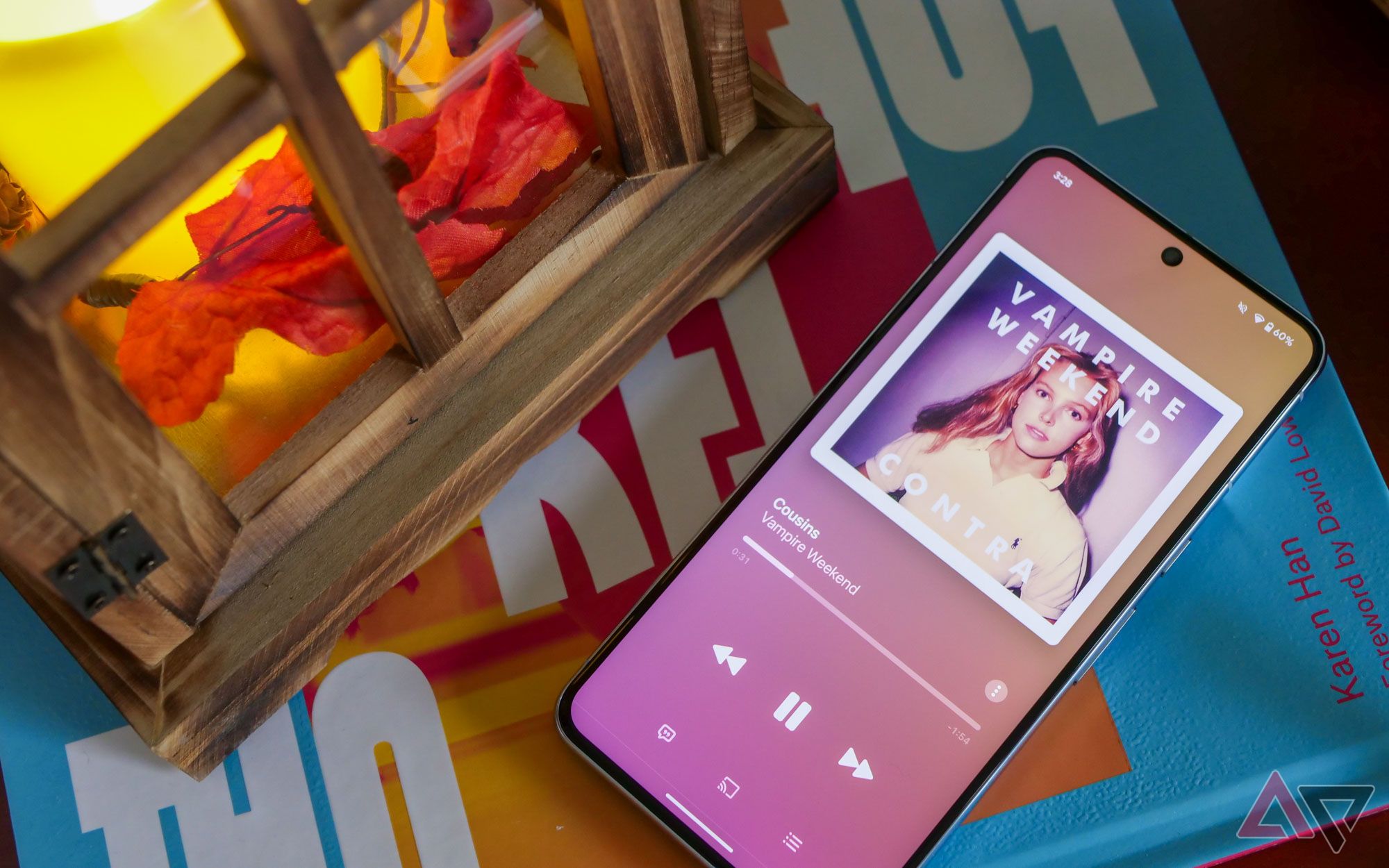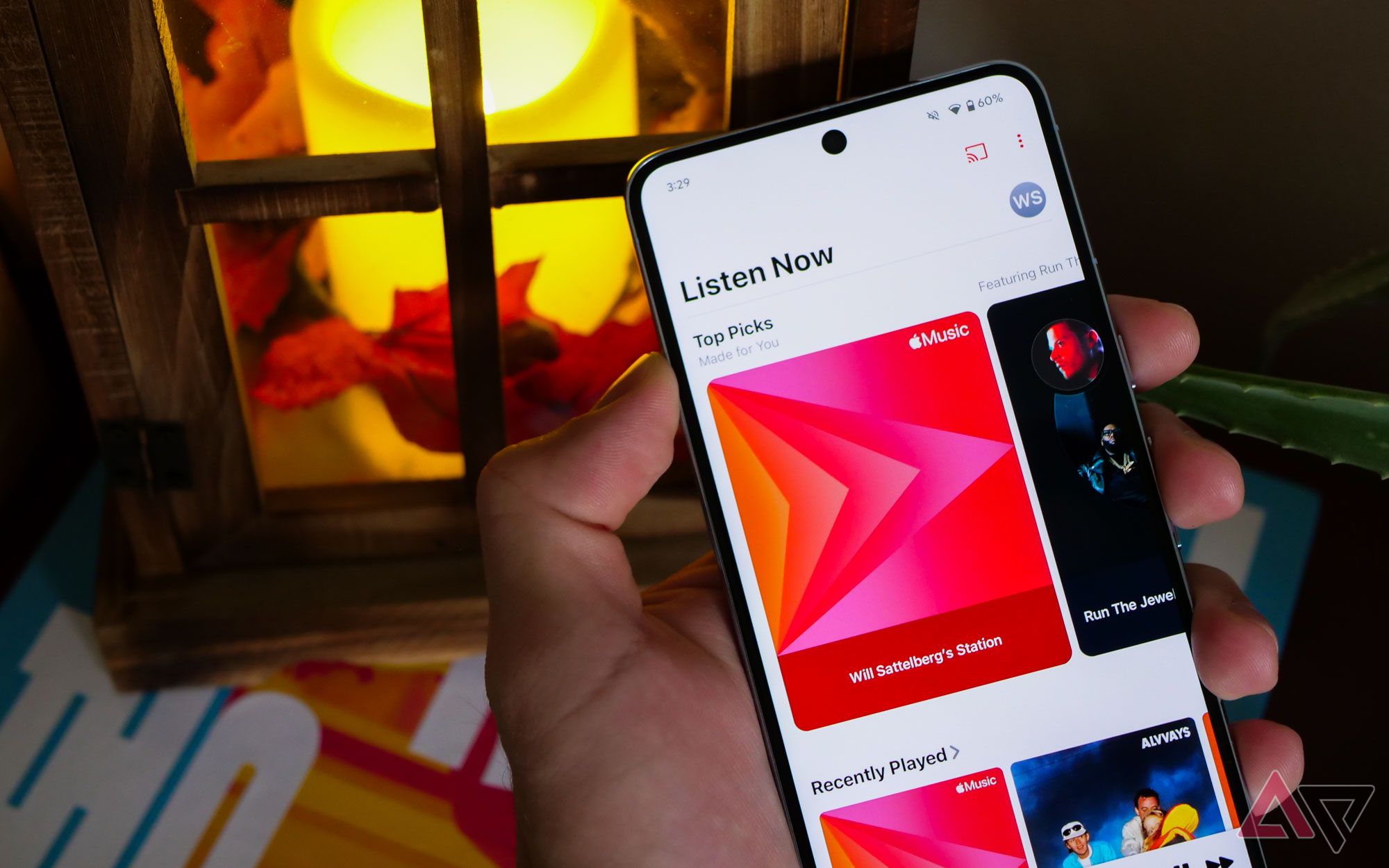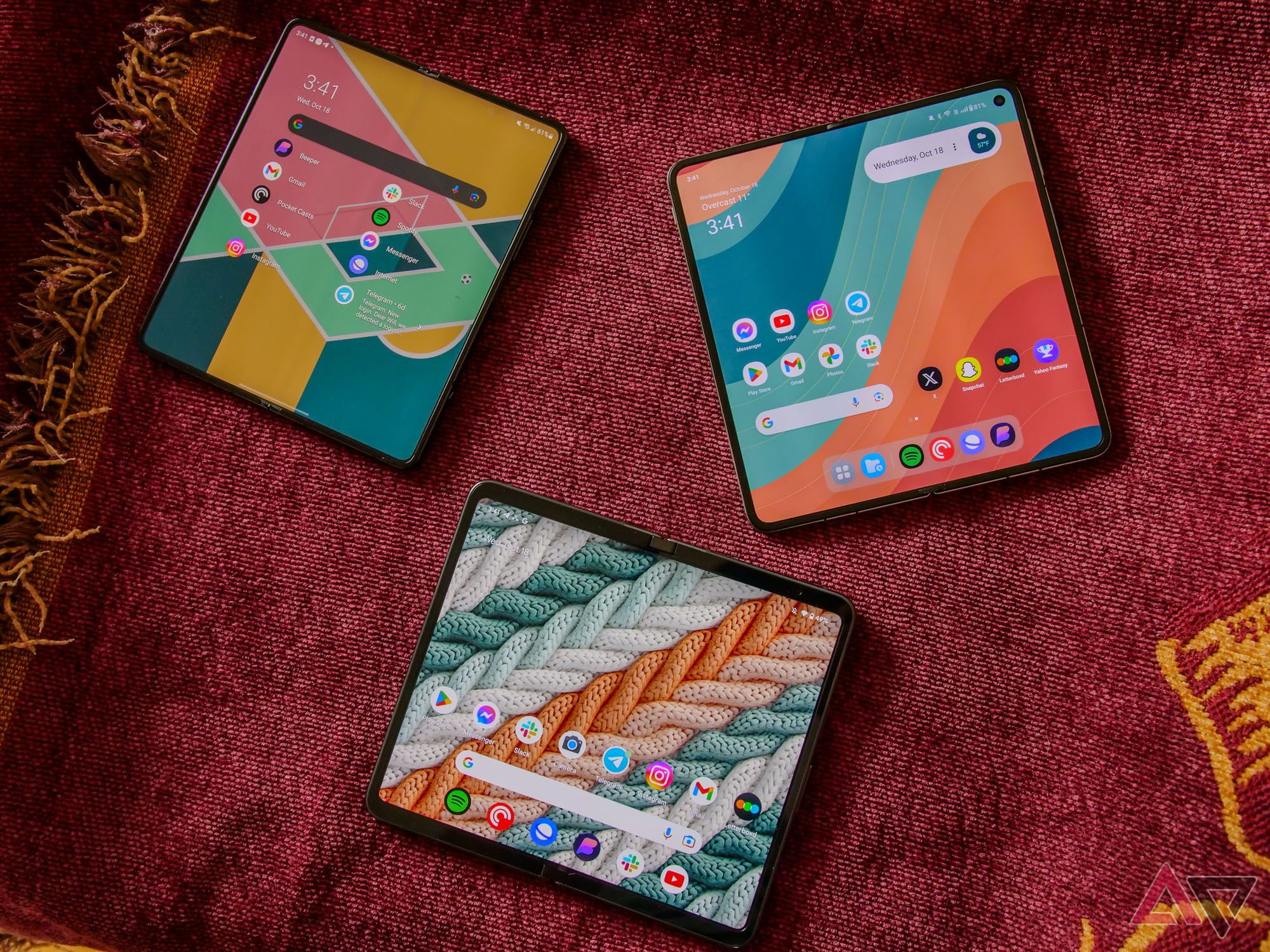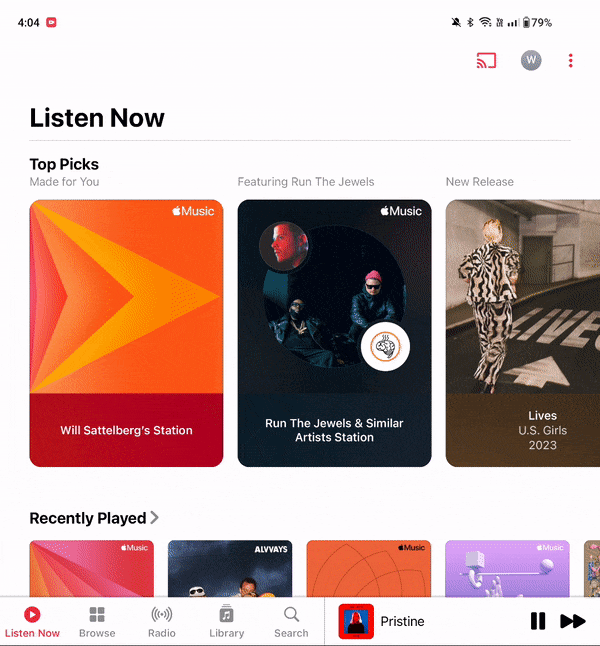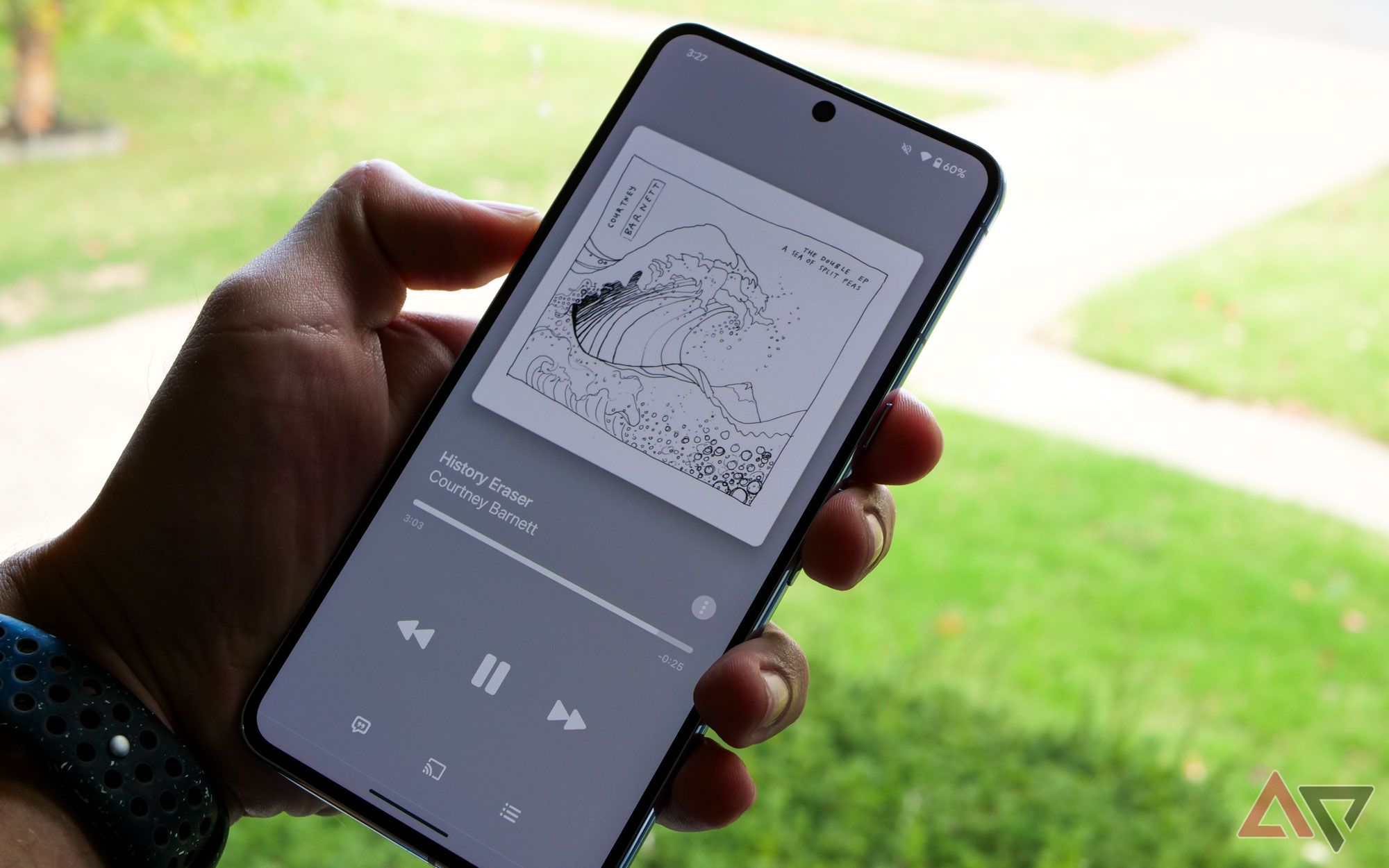Apple Music isn’t the best streaming music service — it’s just the … – Android Police
As someone who pays for far too many music streaming services, allow me to let you in on a little secret. If you’re looking at making a choice between Spotify, Apple Music, and YouTube Music, there really isn’t a right choice to be made. And no, it’s not because all three apps — in addition to the countless services that make up smaller portions of the market, like Amazon Music or Deezer — are winners guaranteeing a great user experience. Rather, all three are frustrating in their own unique ways, leading me to discover that, to my absolute surprise, Apple Music takes the cake simply by getting out of its own way.
Now, I’m not here to say Apple Music does everything right, especially on Android, where features like smartwatch support remain missing compared to iOS. Rather, Apple Music manages to bring back the best of long-lost legacy apps like Google Play Music or Rdio. These services stayed out of your way while you listened to your favorite songs, and likely paid the price in the long-term for it.
If you’ve been locked to a single music app for years, allow me to walk you through three of the most popular options around. The experience offered by Apple Music on Android may surprise you — in fact, it may even persuade you to try it out for yourself.
Let’s skip to the chorus
Spotify’s UI is a mess, and it’s only getting worse. Upon opening the app — assuming you aren’t greeted with an ad for Duo plans or seemingly sponsored new releases — you’re overloaded with options. Recent playlists and albums, new releases, and top mixes all present an overabundance of ways to jump back into your music collection. Scroll far enough — or use Spotify’s filters along the top of the app — and you’ll find yourself sliding through social-friendly previews of suggested playlists
YouTube Music looks nearly identical. You’ll find recent playlists, a collection of personalized mixes, recommended new releases, and more, with the option to select tags near the top of the screen. Samples — the same TikTok-style feed Spotify has experimented with in the past — takes up a quarter of the tabs along the bottom of the screen.
Frankly, Google’s current music app is so similar to Spotify, calling it a clone almost feels too polite. It’s clear YouTube Music is targeting the same recommendations-first experience implemented by its biggest competitor.
Apple Music feels less like it’s trying to persuade me to listen to what it wants, and more on personalized library curation
Apple Music, meanwhile, is a little more streamlined. You won’t find filters on its homepage — just top picks alongside recently played music. It’s familiar to the other two apps, but the addition of a “Browse” tab makes it easy for Apple to keep generic new releases out of its more personalized selections, and the Library tab is leaps and bounds more navigable compared to Spotify or YouTube Music (even if the addition of a “TV & Movies” tab confuses me to this day).
It’s a small difference, but Apple Music feels less like it’s trying to persuade me to listen to what it wants, and more on personalized library curation. And this feeling isn’t limited to the home screen — it also expands into the Now Playing display as well.
The iPod, reimagined
This one’s bound to come down to personal preference, but it’s worth commenting on anyway. Spotify and YouTube Music both suffer from untold amounts of clutter, and that expands to their respective Now Playing screens. Each app includes its own share of frustration worth breaking down.
Spotify is, in my opinion, the least offensive of the two. The overall playback screen is fine, though the inability to add songs to your library outside of liking them shows a disrespect for the concept of a “library” that I find nauseating. The ever-available lyrics along the bottom of the screen don’t bother me, though they do stand out of place with a feature that could live behind a button. I also hate Spotify’s animated Canvas feature — I turn it off on every single device I install the app on — though I understand I’m likely an outlier in this regard.

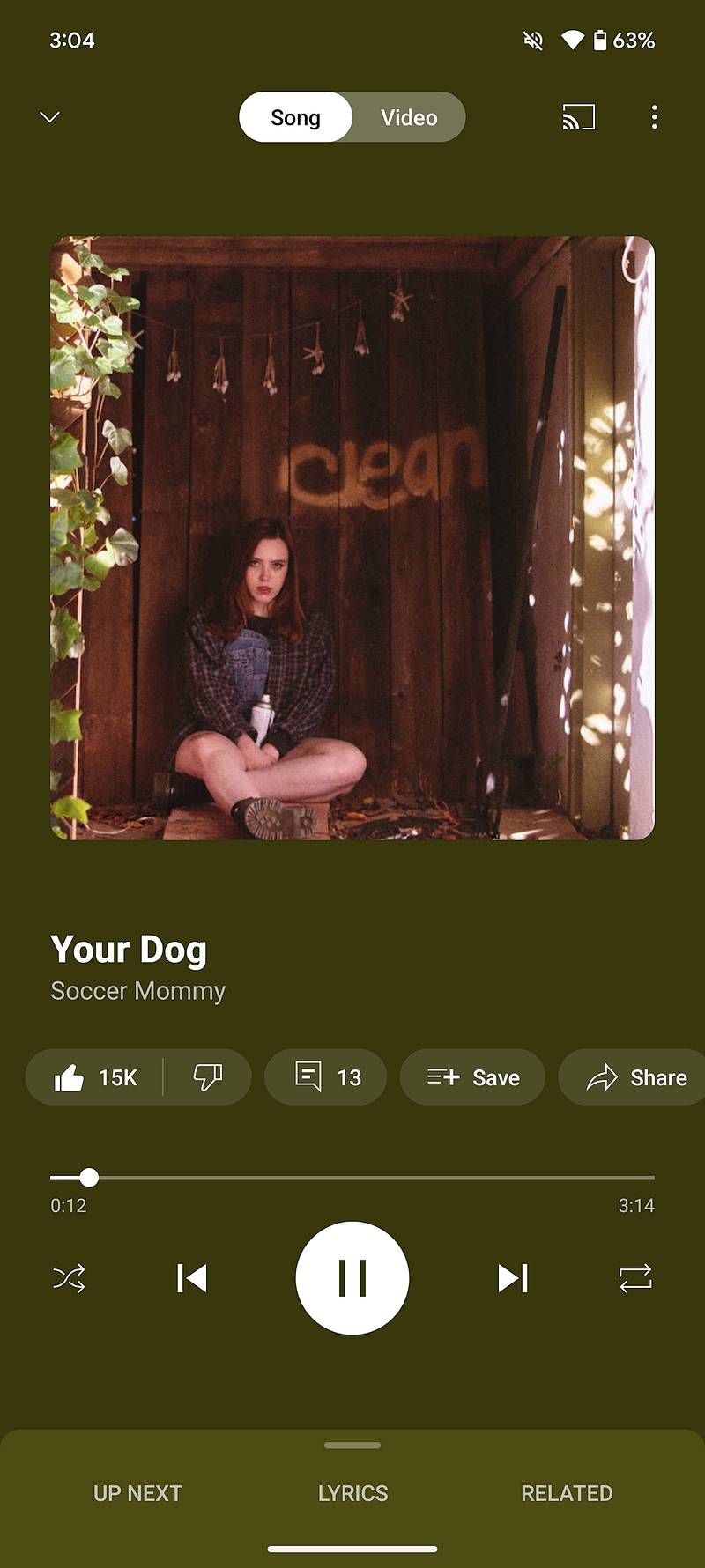
Spotify and YouTube Music’s Now Playing screens.
YouTube Music takes things up a level. Like the home screen, the overall layout looks similar to Spotify’s UI, but a closer look reveals all sorts of annoyances thanks to its relationship with YouTube proper. Public like and dislike buttons have no reason to exist here, and that goes double for comments. These useless toggles push essential elements — including the Download and Radio buttons — completely off-screen. I also dislike the ever-present Video toggle, which exists even for tracks lacking any associated short film. If I wanted to watch a music video, Google, I would.
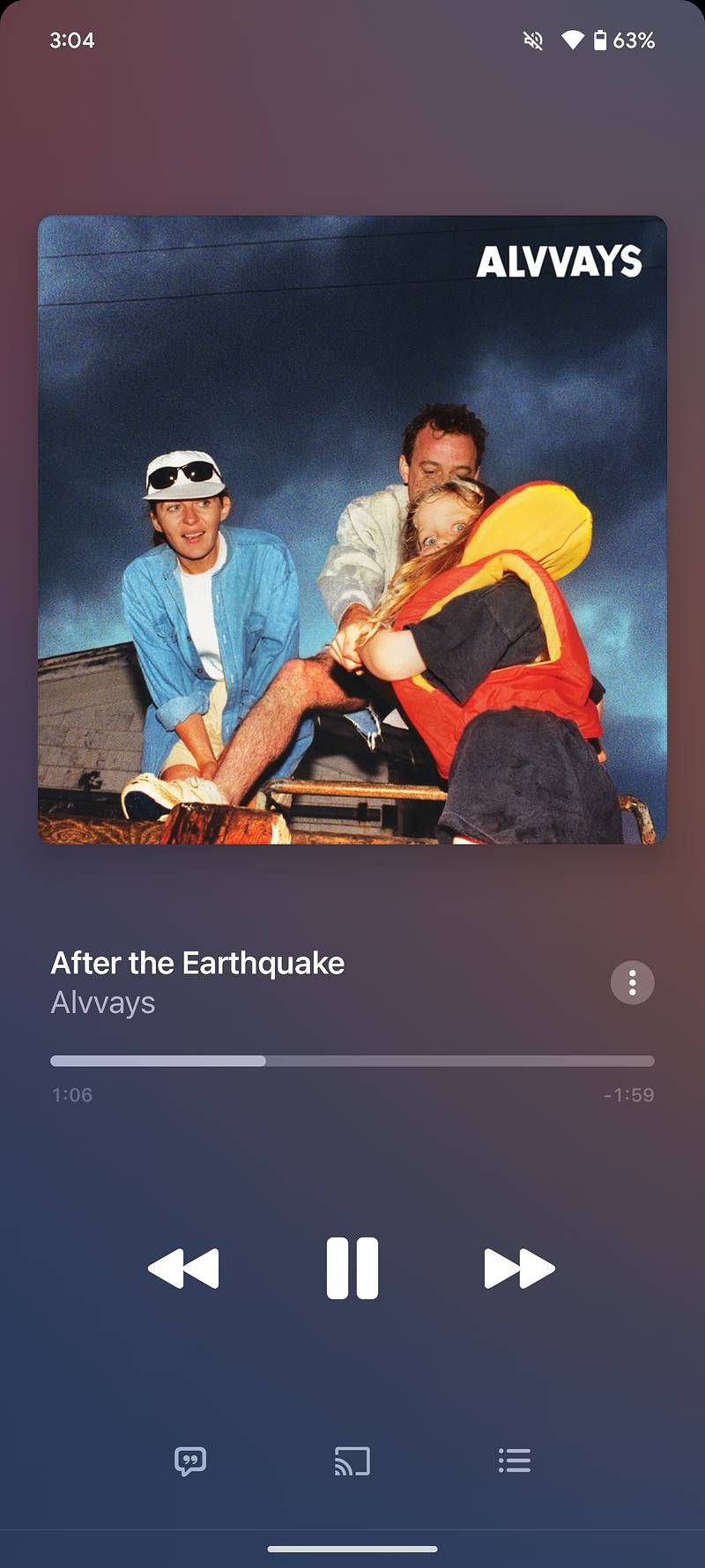
Apple Music’s Now Playing screen.
Apple Music, meanwhile, feels like a successor to the iPod. Simple playback controls, options for casting, lyrics, and viewing your queue, and a simple menu button for everything else. It removes the clutter without removing actual features — it even retains the option to add a song to your library, while keeping likes and dislikes completely separate.
It’s about music, not audio
The biggest issue facing Spotify and YouTube Music remains their split focus. After all, it’s not just music that you’ll find yourself swamped with in these apps — that’s not where the money lies for these platforms.
Spotify is the worst offender here, because it’s not just podcasts. It’s exclusive podcasts, a market that, by all counts, has completely imploded for the company. Outside pre-existing acquired hits like The Joe Rogan Experience, Spotify has been left with a shell of original programming that seems doomed to continue to accumulate debt, all while making the experience of actually using its app markedly worse.
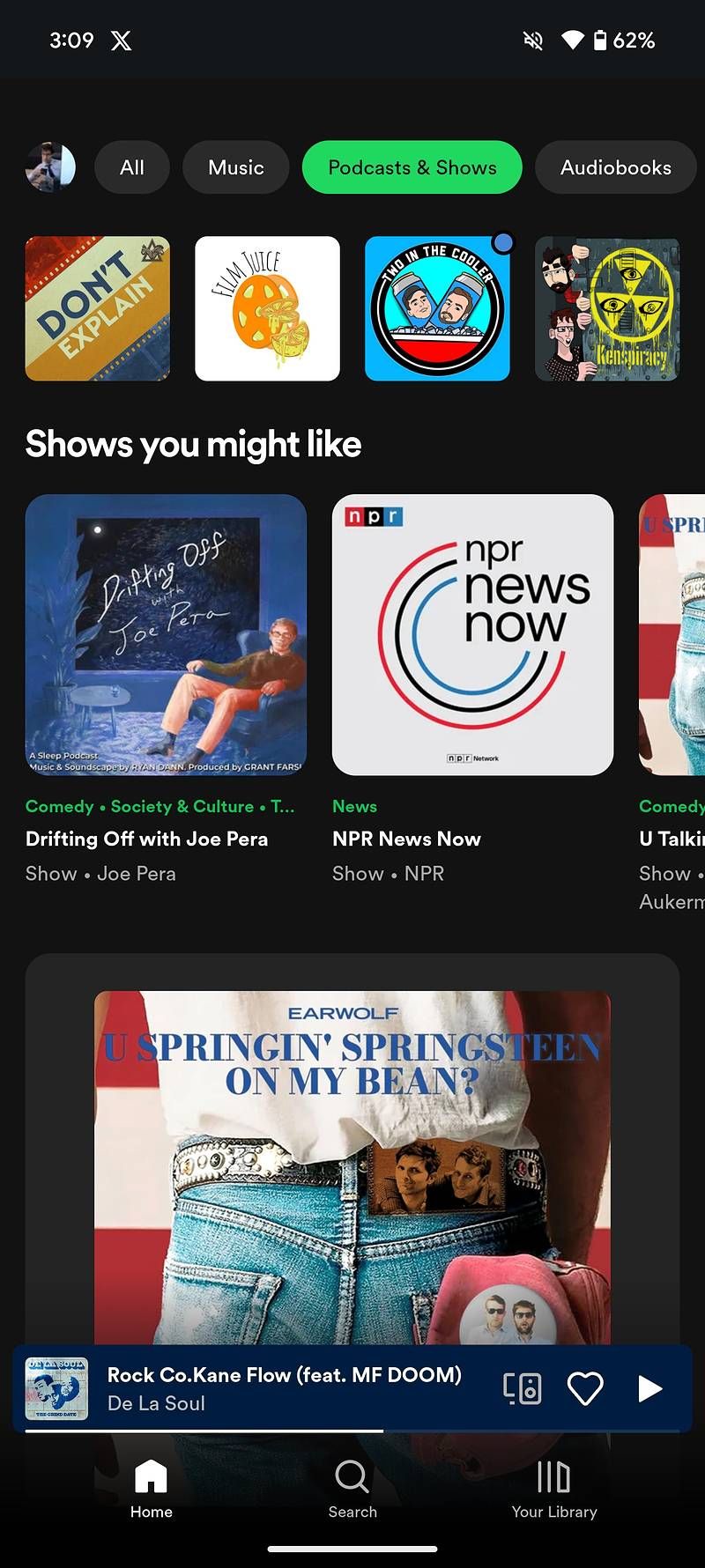
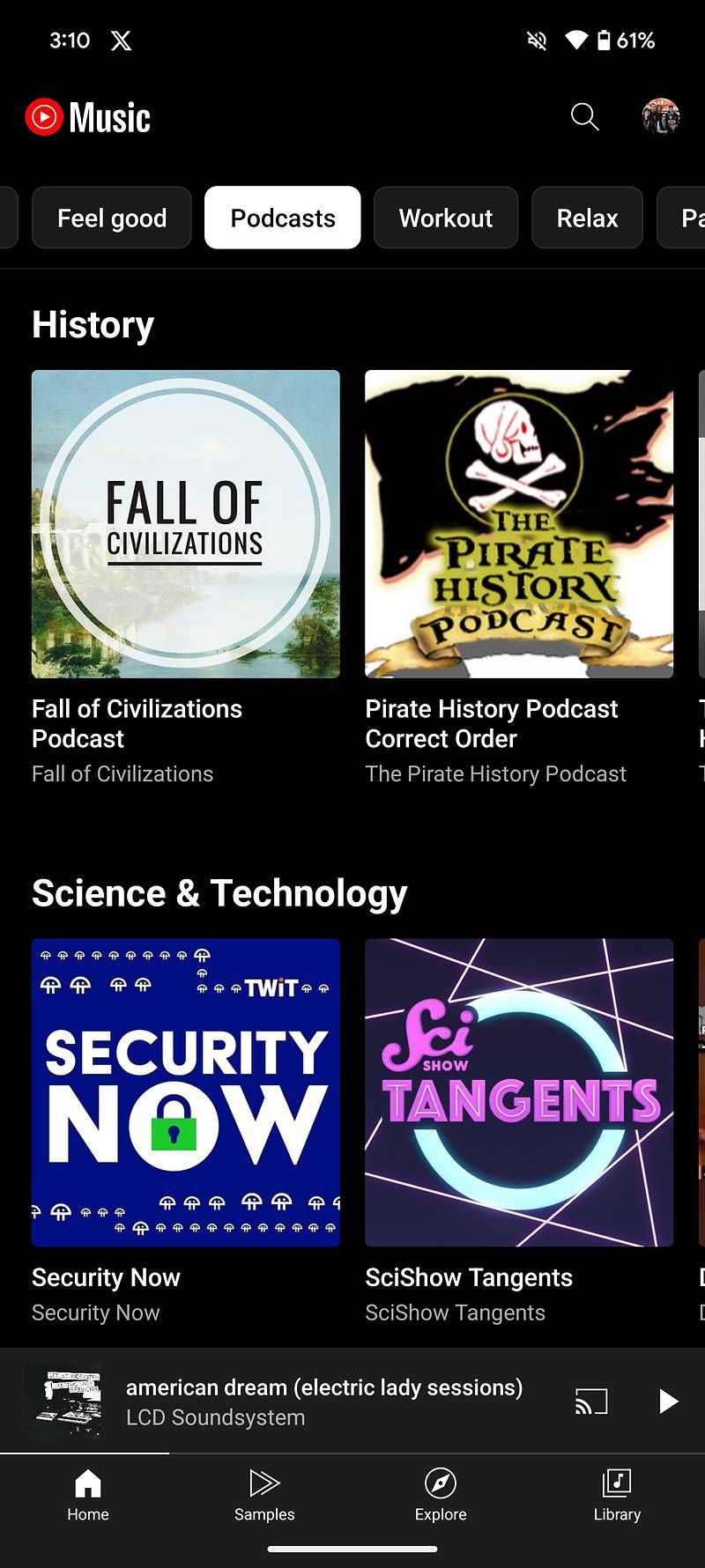
Spotify and YouTube Music’s podcast pages, respectively.
I have no doubt that there are people who like the podcast recommendations delivered by Spotify, but I can’t count myself among them. Although it’s been dialed back from the app’s homepage, access the app through Android Auto and you’ll find yourself inundated with episodes of shows you’ve never heard of, rather than the music you probably wanted to listen to.
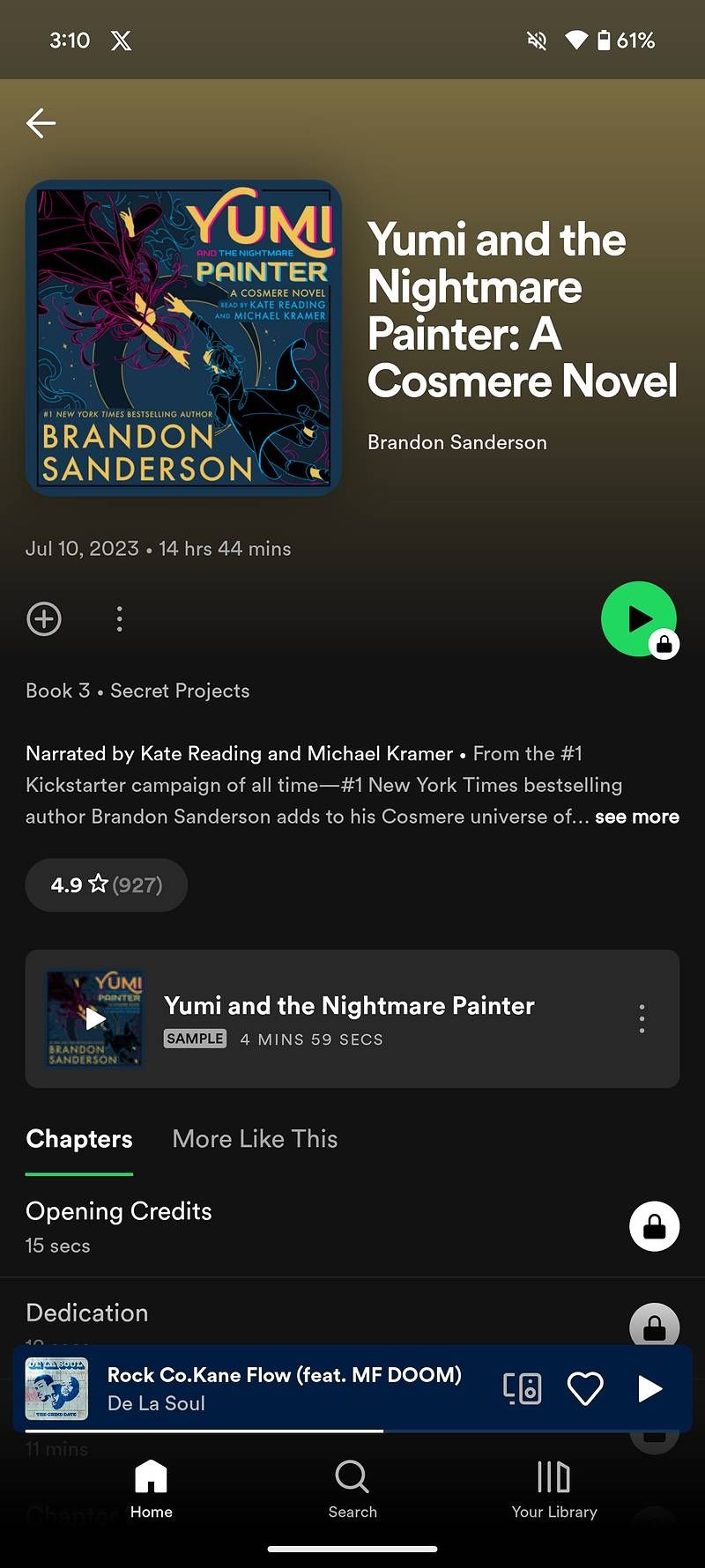
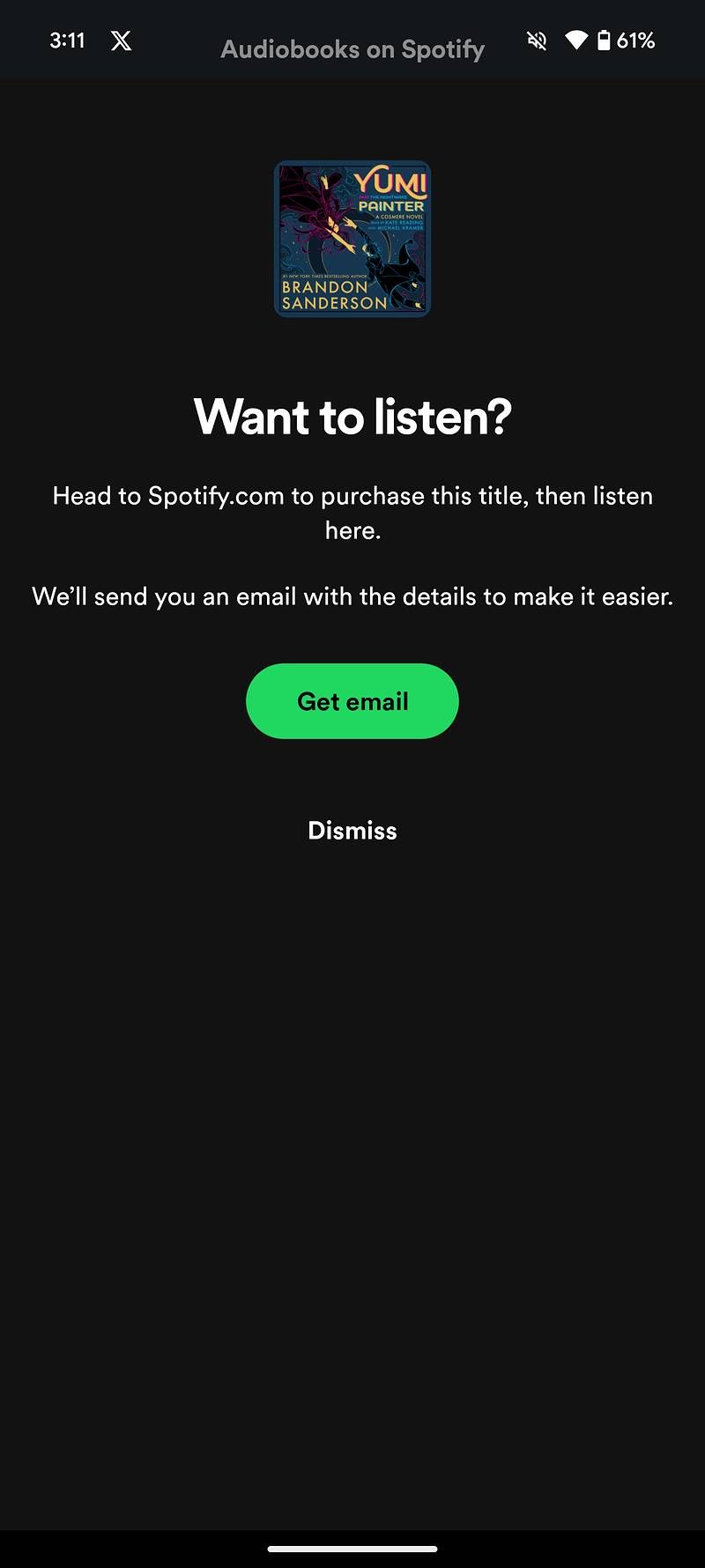
This is, by the way, to say nothing of Spotify’s half-assed efforts to expand into audiobooks, though frankly, these are pushed far less frequently compared to podcasts, in part because purchasing an audiobook requires you to do so outside of the app. I expect these to eventually disappear entirely, a half-forgotten feature that will surprise anyone when you bring it up.
Apple Music knows what it is — it’s not trying to pretend to be a one-stop shop for all things audio.
When it comes to podcasts, YouTube Music followed Spotify’s footsteps here — in fact, Google Podcasts is shutting down next year in order to shift focus entirely to podcasts in YouTube Music. It’s a strategy that makes little sense to me. Dedicated podcast listeners usually want their feeds to live in a dedicated podcast app, separate from the rest of their library. Talk to anyone who relies on Spotify for their podcast collection, and you’re likely talking to someone who only streams two or three shows regularly. For Google to leave behind its dedicated service — as unfinished as it felt — feels like a way to quietly ignore podcasts while still showing some level of support.
Apple Music, meanwhile, focuses on music. The company’s dedicated podcasting app serves as its own gateway into the artform, and while it’s not available on Android, it’s also not good enough to beg for a port of that platform. Apple Music knows what it is — it’s not trying to pretend to be a one-stop shop for all things audio, and I really appreciate that.
New form factors count
Open up Spotify on the foldable of your choice, and you’ll find a UI that mirrors its web-based version… that is, until you tap on the Now Playing screen, which looks utterly dreadful on any large screen. Open YouTube Music on similar devices, and you’ll find… well, pretty much the same thing.
Spotify and YouTube Music on the OnePlus Open
Open up Apple Music on a foldable or tablet, though, and you’ll find the best streaming music UI on foldables today. Despite the lack of a foldable, expandable iPhone, the devs behind Apple Music have actually optimized the app for larger screens. This isn’t a basic port job of the iPad experience, either — it’s its own thing, and I’m grateful for it every time I’m using something like the OnePlus Open as my daily driver.
See, where Spotify and Google keep the Now Playing screen locked to an expanded full screen mode, Apple shifts its display into a widget you can access from the bottom taskbar. It keeps the five tabs along one side of the screen, and allows you to maximize and minimize your playback controls at will without losing track of your library or current suggestions. It’s actually a better experience than even what’s offered on the iPad — a total surprise the first time you use a foldable.
While Spotify’s lack of customized UI here doesn’t shock me, Google feels behind the times. This is a company that released its first foldable earlier this year, and yet, the current experience feels lacking on big-screen devices. If Apple ever does decide to release a foldable of its own, it’d be smart to talk to the team behind Apple Music on Android — they know what they’re doing.
With any luck, Apple’s attention to form factors will bring Music support to Wear OS sooner rather than later — a huge sore spot in an otherwise exceptional app.
Let the beat drop
There are plenty of ways in which Spotify and YouTube Music excel compared to Apple. Spotify’s social tools stand above any other competing service, as do tools like Connect and, of course, its annual Wrapped year-in-review feature. YouTube Music custom radio stations are surprisingly excellent; it’s like a fine-tuned Daily Mix from Spotify that isn’t limited to a single genre. It’s also impossible to ignore how much easier storing local music in the cloud is through YouTube Music, a feature it inherited from its Google Play-branded predecessor.
But at the end of the day, if you care about the experience of listening to music above all else, Apple Music is a surprise winner in my book. Its library tools are unmatched, the UI remains top-notch — even on devices like foldables — and it has avoided a foolhardy attempt to expand into podcasts or audiobooks. Put simply, Apple Music isn’t the be-all and end-all of music apps. It’s just the one that manages to get out of my way.
Source: News

